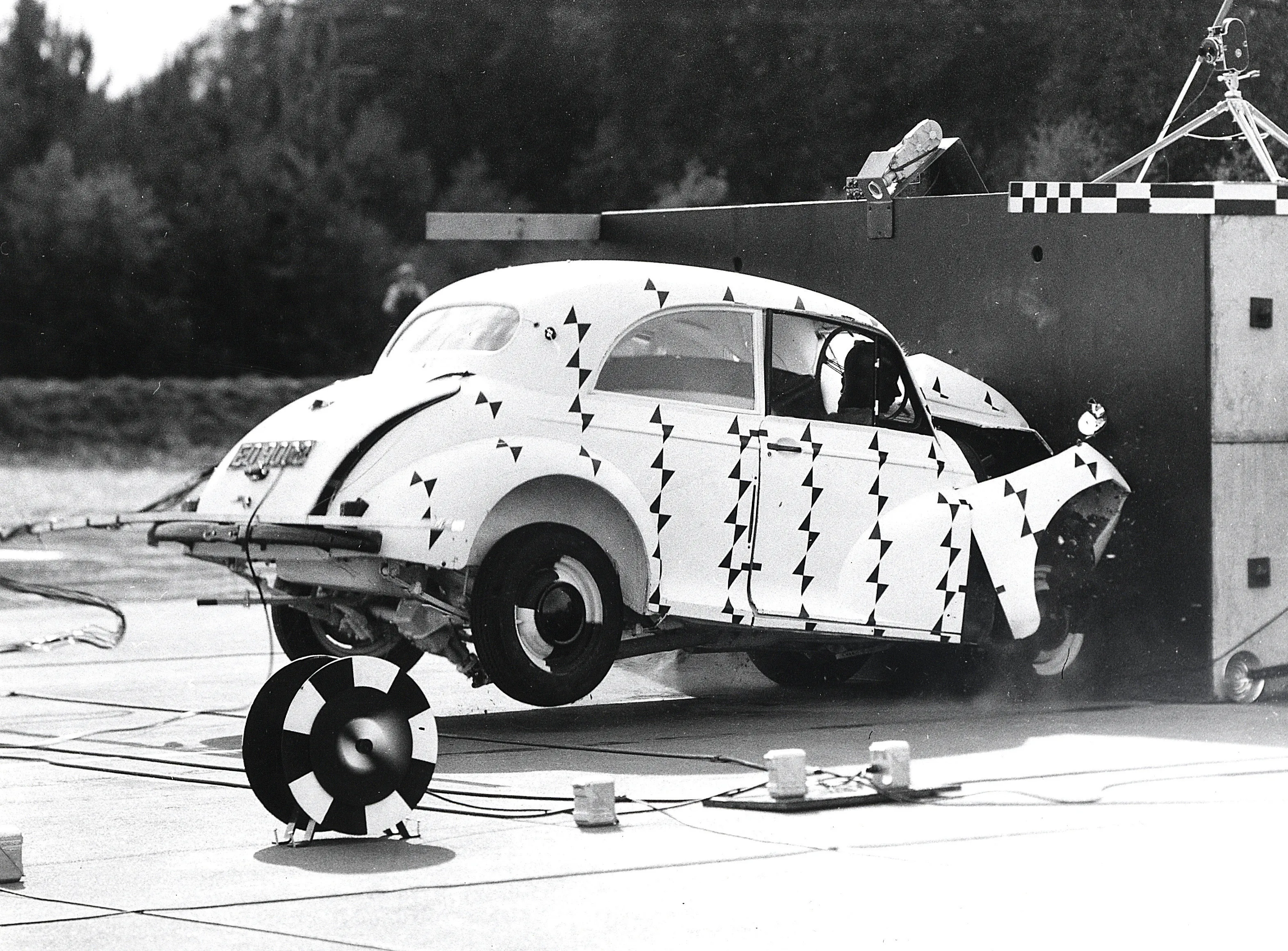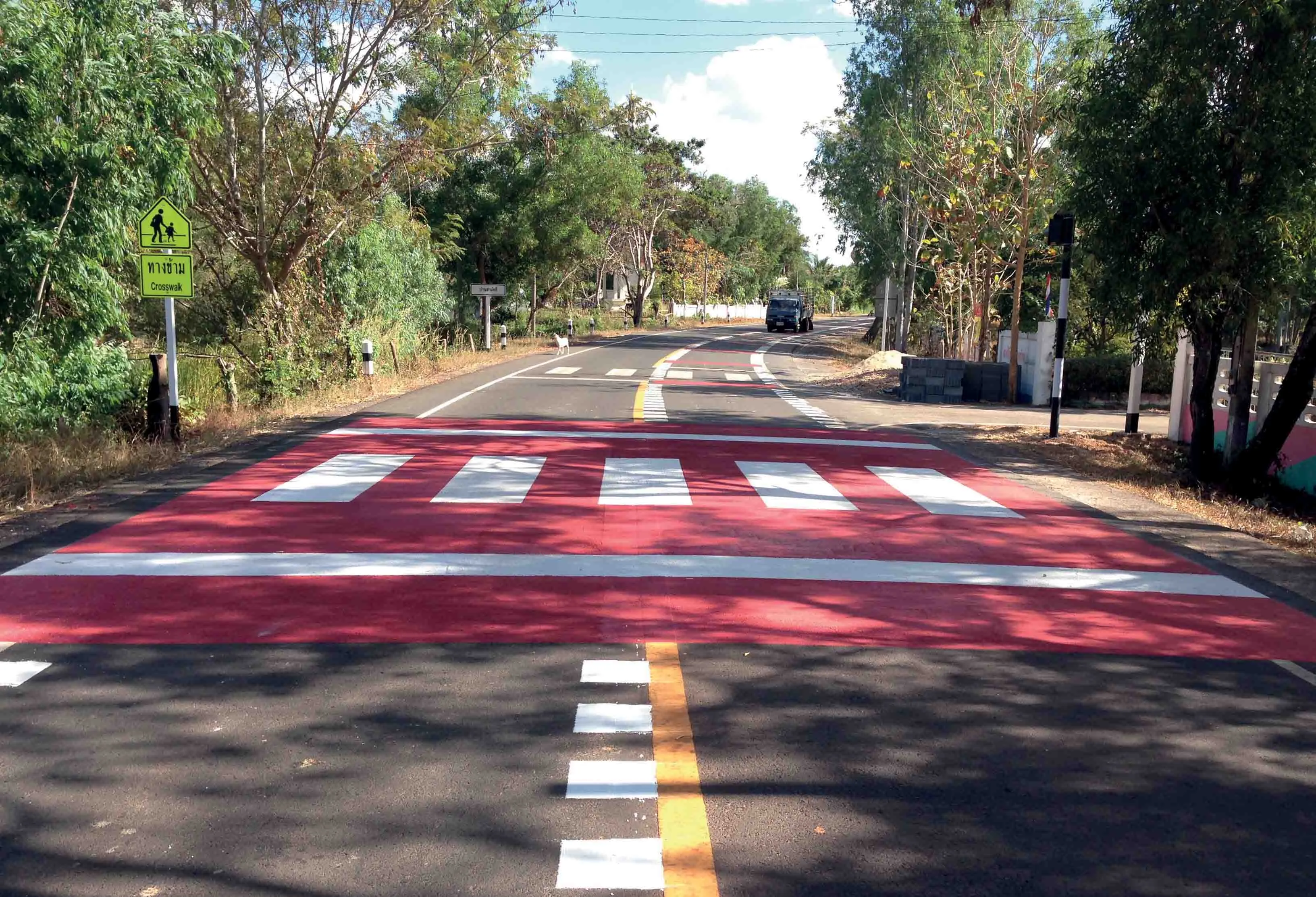
The UK's world-renowned
In doing so, it delivers its vision: to create the future of transport.
The RRL (Road Research Laboratory), was created when the
The focus switched in 1939 when RRL was allocated war research, and it became involved in work on the Dambusters' 'bouncing bomb'.
In 1946, RRL's road safety division was formed at Langley Hall near Slough, west of London. Work included studies of accident data, traffic flow, junction design, street lighting, vehicle safety (initially lighting and braking) and pedestrian crossings.
Crossings at this time were marked using metal studs in the road surface and unlit Belisha beacons [named after UK Minister of Transport Leslie Hore-Belisha].
Model crossings were set up to investigate colour, texture, lighting and wetness. It was concluded that alternating 2ft (0.6m) wide black and white stripes laid parallel to the kerb (Zebra pattern) were most conspicuous. At night, no surface patterns showed up well unless lit by an overhead lamp. Experimental crossings were laid and it was found that compared to conventional markings, Zebra crossings were more visible to drivers and led to better observation of crossings by both pedestrians and drivers. In October 1951, regulations required all uncontrolled pedestrian crossings to have Zebra markings and other road users to give precedence to pedestrians.
In 1955, RRL's Colonial Research Section was formed, becoming the Tropical Section in 1959 and the Overseas Unit in 1972.
The work investigated the particular problems of transport in developing countries, initially concentrating on road materials and construction, but grew to include traffic engineering and road safety. Part of RRL's role was the dissemination of information through courses and publications such as the annual Tropical Roads Course which has been held in the UK and at various venues around world for over 30 years. Similarly, Overseas Road Note (ORN) series of guidance documents, introduced in 1981, can be found in the offices of thousands of transportation professionals around the world.
In the 1950s increased car ownership began to manifest itself with a rise in occupant facilities and injury. Analysis of hospital records and accident investigation data at this time revealed a high incidence of head and chest injuries (for example from unrestrained drivers hitting the steering wheel). Three-quarters of single vehicle impacts were to the front of the car.
This led in 1961 to RRL conducting its first full-scale frontal impact test, with cars impacting a 114tonne block at 60-70km/hr. Three years later, the work had clearly demonstrated the importance of wearing seat belts and the need to coordinate the design of the seat, seat belt, passenger compartment and crushable front of the car in order to minimise the deceleration experienced by the occupants.
In 1967, the Crowthorne offices, also west of London, were opened, bringing staff together from Harmondsworth and Langley Hall.
Another change of name in 1972 recognised RRL's increased capability. Now the Transport and Road Research Laboratory (TRRL), work included studies of bridges, tunnels, road user behaviour, road pricing, public transport and the environmental impacts of vehicles.
Twenty years later TRRL became an Executive Agency of the Department of Transport and its name changed to the more familiar Transport Research Laboratory. TRL competed for work from the Department and was able to bid for contracts from other organisations.
Throughout this time, RRL, TRRL, TRL has worked on developing better roads, looking at the issues of skid resistance, road materials, methods of construction, and measurement of road characteristics.
In the 1960s all available information on road design was drawn together to produce Road Note 29, A Guide to the Structural Design of Flexible and Rigid Pavements for New Roads.
Since then design guidance has been regularly updated: a fundamental re-look at the approach to pavement design is ongoing.
In the past, road characteristics were measured manually or by slow-moving machines. Now thanks to the development of laser and image collection equipment, more reliable information can be gathered in a more cost effective way using traffic speed survey vehicles such as HARRIS1 & 2 (surface deformation) and the Traffic Speed Deflectometer (structural strength).
In 1996 TRL was privatised as a limited company, and the transformation was complete when TRL moved to Crowthorne House, its new purpose-build head office, with state-of-the-art research facilities.
New guidance on asphalt road pavements and overlays
A three-year project at TRL, commissioned and supported by the
Road Note 41 identifies the different techniques for overlaying concrete pavements and bridges with asphalt, assists in the choice of treatment for a specific situation, and gives advice on how to maximise the durability of the treatments.
Road Note 42 gives guidance on the procedures for maximising the durability of asphalt pavements, and is linked to the
"The two guides will be valuable for highway engineers and authorities, consultants, contractors, suppliers of bituminous materials, aggregates and asphalt mixtures," says TRL.








